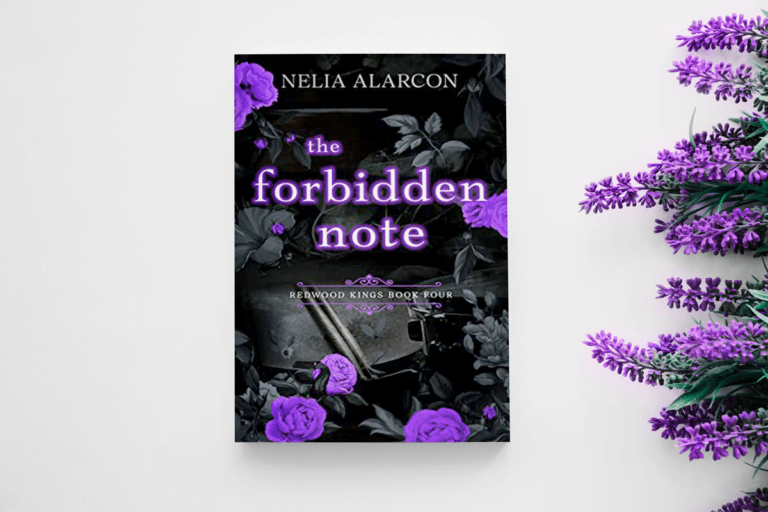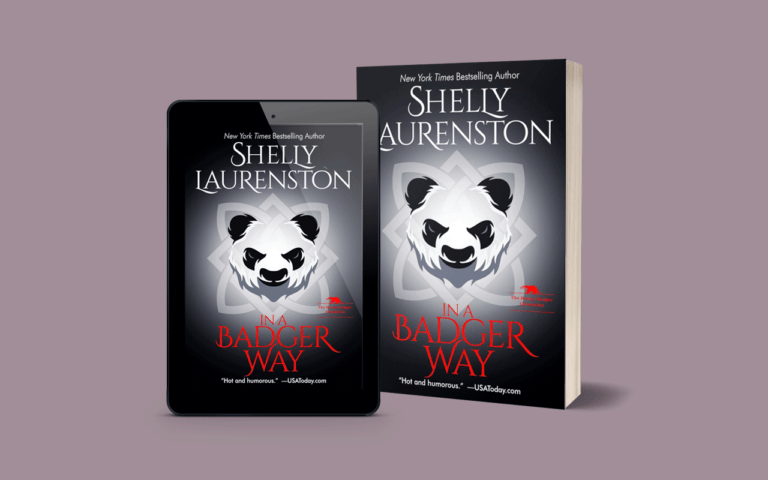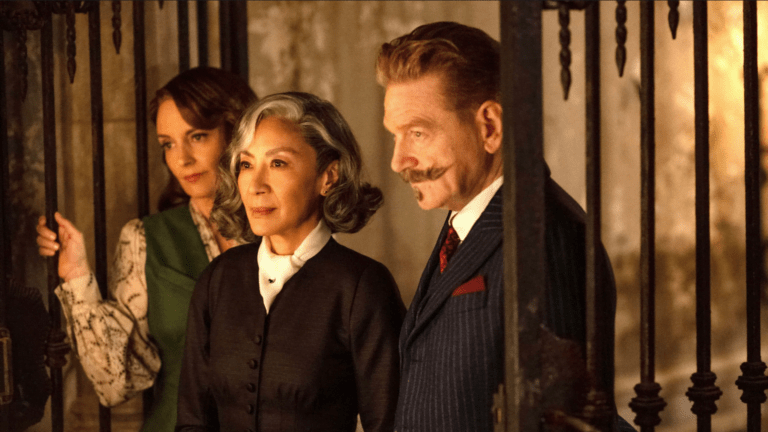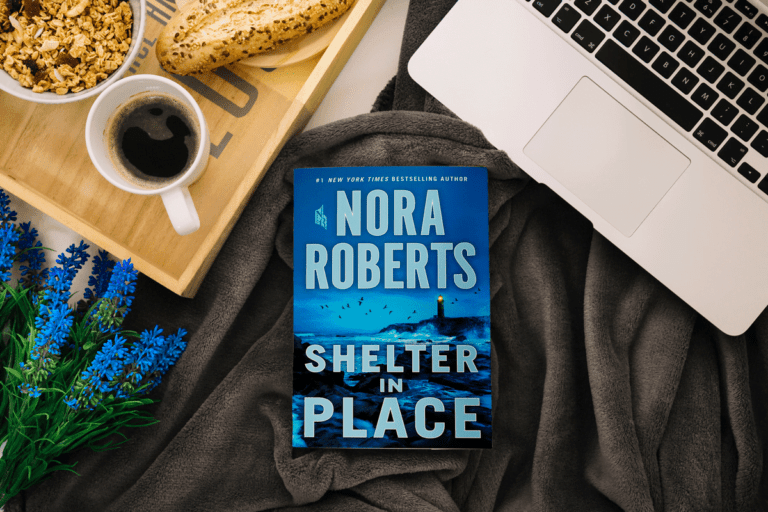And Then There Were None Show on BBC (2015) – The Ultimate Whodunit
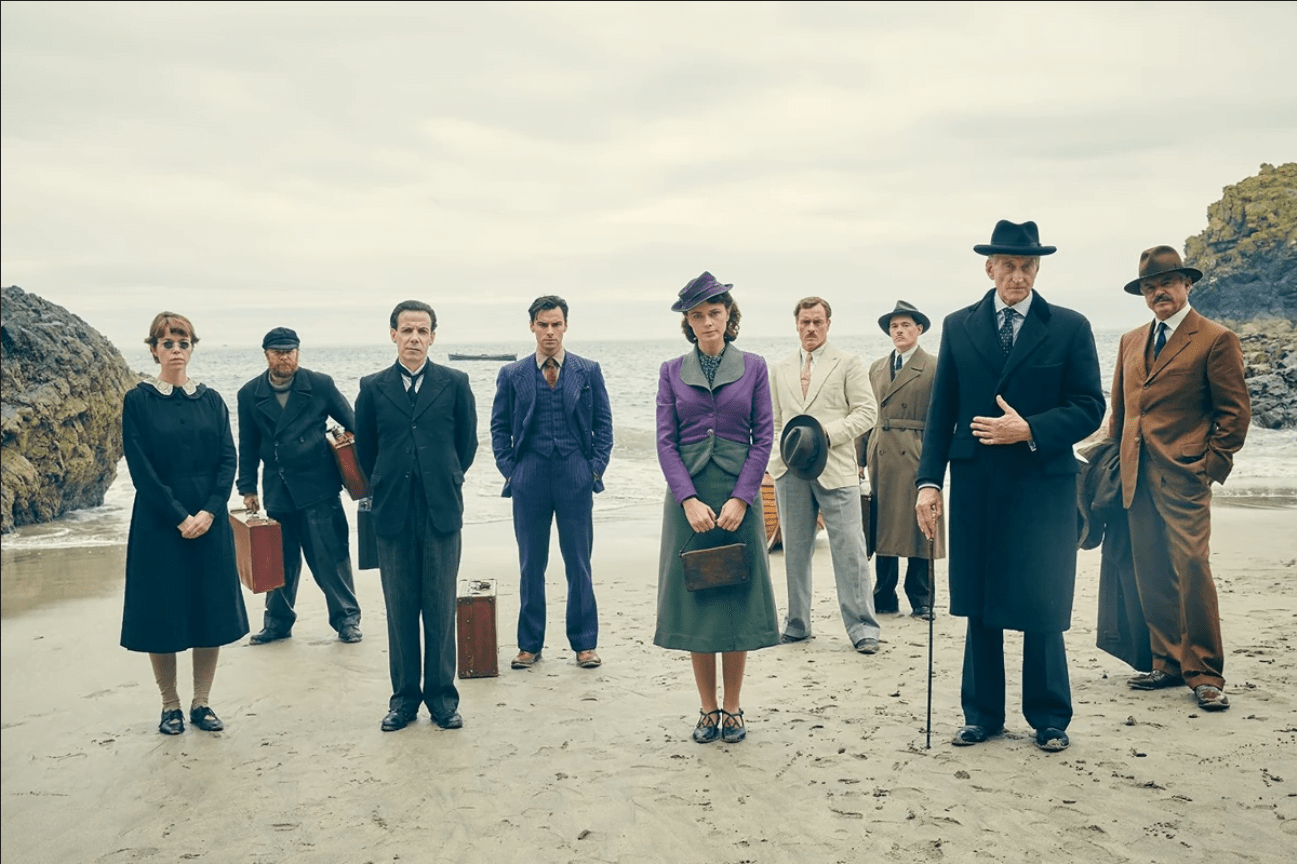
I recently rewatched the fantastic BBC adaptation of Agatha Christie’s best novel. ‘And Then There Were None Show’ (2015) BBC version is excellent and so psychologically intriguing that I’ve watched it several times, despite knowing the ending. It’s a close adaptation with a few tweaks here and there.
Except for the excellent video game, this is the only version I’ve seen, and it appears to be the most faithful. My family and I recently watched the series again, and while we’d all seen it before, it had been so long that we’d all forgotten even more specific details than I had.
I was unable to get a firm response from anyone. That’s true. You probably won’t remember if Wargrave had cancer if you can’t recall who committed the crime. The reader doesn’t learn that he has cancer until much later than the series does.
In less than an hour after we ended the series, I dusted down my old copy of the book. I tend to get obsessed, as I’ve admitted before. Instead of moving on like a normal person would, if I’m enjoying something, I try to figure out how to make it last as long as possible.
To prepare for this comparison, I reread the book while making careful notes on the many ways in which it differed from its predecessor. Although this is not the first post of its like, it is by far the most comprehensive comparison of an Agatha Christie book to its corresponding television adaptation.
And then there were none is the best book ever written.
It’s been much too long since I last did a post that was both incredibly technical and involved.
- 1. Synopsis
- 2. Name of the Island
- 3. Lombard's Story
- 4. The Usual Suspects
- 5. Romance Theme
- 6. Friendship Theme
- 7. Armstrong's Character
- 8. Miss Brent's Death
- 9. Blore's Death
- 10. Rogers' Character
- 11. Macarthur's Character
- 12. Vera's Character
- 13. Seton's Death
- 14. Ending explained – Book v/s Series
- 15. Confession and Death of Justice Wargrave
- 16. Murders or Deaths?
1. Synopsis
When ten strangers accept an invitation to a remote island, they soon discover that they have been tricked into going there. One by one, they are systematically eliminated after being falsely accused of murder on the first night.
Since this is such a comprehensive analysis, you should probably avoid it unless you enjoy spoilers or have already seen the TV show or read the book being compared. I’m not sure if it’s absolutely necessary to include a spoiler warning on a post about a book that came out in 1939, but here it is anyway.
Do yourself a favor and read And Then There Were None if you haven’t already. The entire miniseries lasts approximately three hours, and reading the book won’t add much more time to that. It’s money well spent.
Since this is a faithful adaptation, even the most substantial alterations are, in the grand scheme of things, very tiny, I figured I’d start with them and work my way up. Depending on how much I enjoyed the shift, I’ll give the book or series extra credit. I enjoy a healthy dose of competition, and I genuinely enjoy both types equally.
If I were to speculate before getting started, I’d say the series will likely do better in the beginning and the novel will do better in the end. While the series excels at developing its characters, the novel has certain advantages in terms of the mystery itself.
2. Name of the Island
The homicidal nursery rhyme is renamed “The Ten Little Soldier Boys” instead of “The Ten Little Indians,” and Indian Island is renamed “Soldier Island” throughout the miniseries. The story is fantastic, but the racist poetry is terrible, especially in its original English.
While “soldier boys” removes some unacceptable bigotry, it does not modify the novel’s best portions. See? It’s true that not all shifts are bad.
3. Lombard’s Story
When I first read And Then There Were None, I thought Lombard might be the hero/narrator of the story just like Crooked House, But boy oh boy. I could not be more wrong.
Another story about racism, another one. However, this situation is more intricate. In some respects, Lombard is mellowed by the show (in others, he’s hardened, but we’ll get to that). Lombard’s racism in the novel is more subtle.
He denigrates the Jewish Isaac Morris and, more seriously, is responsible for the deaths of twenty-one men from a tribe in East Africa. Killing these East African men is no big deal, Lombard coldly hints in the novel, because they are less human than the English and hence care less about dying.
The series takes a slightly different approach.
Despite Lombard’s continued lack of remorse, he is seen to have admitted to the murders. In the same vein as the other nine, he is a killer, but he is also the only one who freely confesses it. There is also an implication that his stance on the crime would not have changed if the perpetrators were not East African.
Yes, Series Lombard murdered people, but he had no racial bias. The show deals with racism in an unusual way, which is an interesting twist. The novel doesn’t say what Lombard’s country is (he’s supposed to be English), but in the TV adaptation, he’s Irish, so everyone treats him with extra mistrust.
He is more than just a killer who carried a pistol to a remote island. In 1939, he was an Irish killer who smuggled a gun to an unknown island. Without the inclusion of Irish Lombard, it would be difficult to situate the work in time or place. He introduces a small taste of the outside world to the island, showing that no matter how remote you are, you are never truly cut off from the rest of humanity.
On the other hand, Lombard’s racism makes him substantially worse, at least in the bottom two. Nonetheless, I guess I’ll give this one to the series because Lombard’s double murder is horrific even if it wasn’t driven by racism and because the racism is merely present without being greatly remarked upon.
When Lombard and the native men are cornered, he abandons them and makes off with their food and supplies. He mines them for diamonds in the performance. It appears that he also set fire to their village.
Yikes.
Because of that, he’s pretty terrifying. He’s a murderer either way, but the consequences vary. Book Lombard has no qualms about abandoning the guys to their deaths because he does not regard them as human beings. Selfish and greedy best describe Series Lombard.
They’re both awful, and it’s tough to pick a favorite. And as I mentioned up top, it’s a little perplexing as to why this was modified while other aspects of Lombard are toned down for the series. Perhaps because it’s harder to hide the evil of shooting twenty-one guys than it is to hide the evil of abandoning them.
Having said that, if it ain’t busted, don’t fix it, and I don’t believe this is a terrible change. However, because neither is noticeably superior, I will wait to award points.
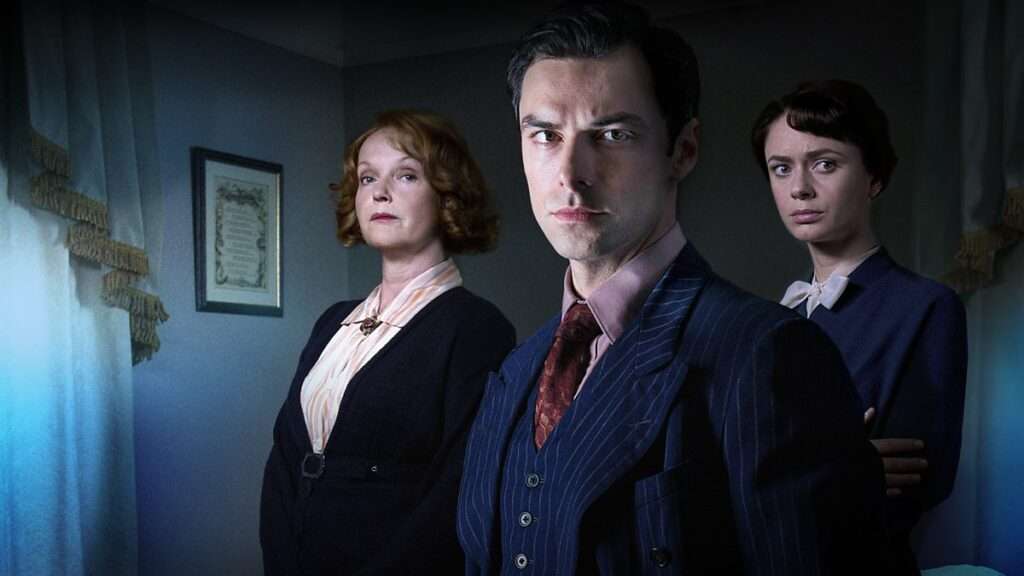
4. The Usual Suspects
The fact that Lombard and Blore are the novel’s strongest protagonists is highlighted repeatedly. In circumstances when there are many locks, Lombard and Blore are each given a key so that neither of them can steal the other’s without making enough noise for the others to notice.
After every murder, the suspect pool is narrowed down to one or two people who would have had the physical strength to pull off the crime. However, no matter how frail a person (read: a woman) may appear, the gang is reminded that they should never rule anyone out since madmen have enormous, unexpected reservoirs of force.
Any one of them may have committed the killings, as Judge Wargrave says early on in the series. Book Vera’s account of Cyril, the youngster she killed by putting him into a current in which he could not have survived due to his frail health, is questioned.
Hugo indicates that Vera’s power, rather than Cyril’s fragility, is the suspect factor in the series. I like the series’ take on this more. It was relieving to finally get rid of the “a woman couldn’t have done this; they’re too weak” element so often in mysteries.
In other words, anyone could have done it. All of them have sufficient strength, and they’re all suspicious to the same degree. I find it less intriguing when a mystery centers on who is powerful enough to do something rather than who really did it.
5. Romance Theme
Of course a film from 1939 and one from 2015 will handle sexuality and sex differently. Lombard and Vera are the best examples of this. Their relationship develops in the story, and there are romantic connotations to their conversations, but nothing comes of it.
They develop a more evident romance in the show. Armstrong suspects that they are Mr. and Mrs. Owen due to their closeness and the fact that they sleep together. While I don’t think consummating the relationship makes a huge difference, I did enjoy how the increased scrutiny of their relationship made me feel uneasy.
Making that relationship something that the other characters notice and comment on helped to further develop the characters’ personalities and ratchet up the tension in the series. The show has altered its approach to sexuality in other ways.
The implication is made that TV’s Emily Brent is queer. It’s hinted that Emily’s envy played a role in her decision to fire her serving girl rather than simply dismissing her as immoral because she got pregnant. The only thing this accomplishes is bring up the tired cliche of the mad lesbian.
An outlier like Blore. Blore is lightly queercoded, so it’s easy to read his homophobia as stemming from gay panic (he touches Landor, his victim, repeatedly before attacking him, wears a woman’s hat while dancing with Armstrong, and at his most terrified he looks back on Landor with guilt), and in the series, Blore violently kicks in a gay man’s head purely for the sin of being gay.
It’s never put into words, but you may infer it.
When I reread it, Book Blore also rings some alarms. Since I read a lot of queer literature, I am able to recognize subtle queercoding (and, well, sometimes even see it when it isn’t). Christie probably didn’t intend for Blore to be a gay man hiding in the closet, but you never know.
A couple sequences have an overtly feminine portrayal of Blore, and he is referred to as “not straight” multiple times. It’s meant to imply that he’s a corrupt law enforcement official, but after researching the word’s origins, I discovered that the term “straight” became slang for “heterosexual” not long after the publication of And Then There Were None.
Is it even feasible to pinpoint the exact first use of something? Someone else must have noticed the same thing about Blore in the BBC drama, so I can’t be the only one. At any rate, unlike Emily’s, which appears to exist just for shock value, Blore’s queercoding is a lot more nuanced and intriguing.
Since Blore and Vera/Lombard are more intriguing and Emily, while worse, only has one scene to her detriment, I’ll give this one to the series.
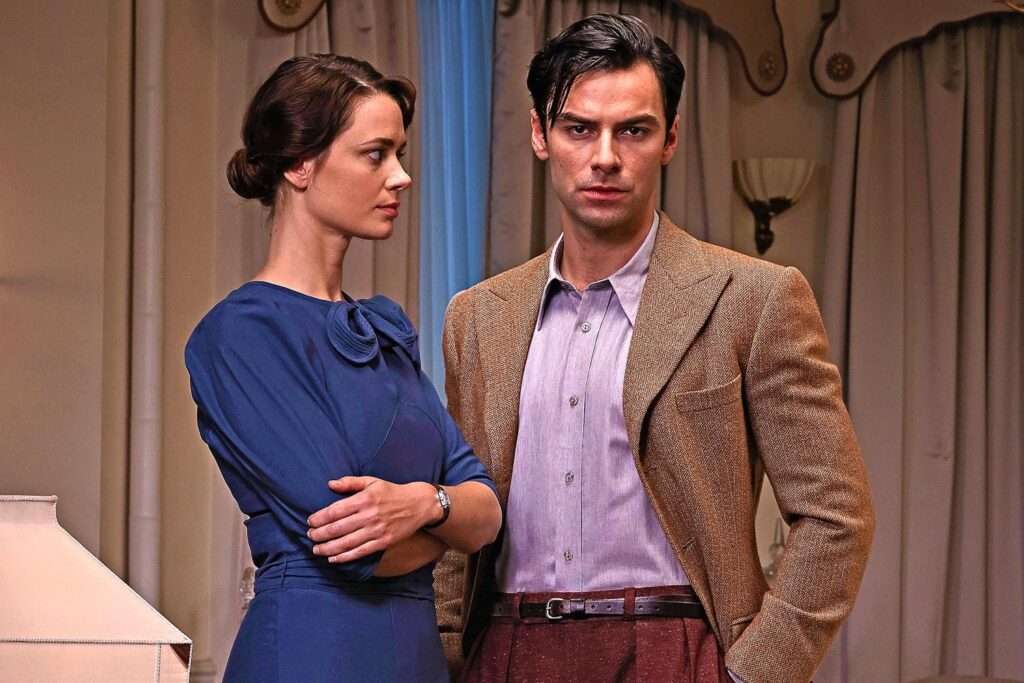
6. Friendship Theme
Considering how much time they spend on the island thinking that anyone else could be a homicidal madman, it makes sense that the characters don’t become particularly close to one another.
However, there are some pairings that develop deeper friendships. Lombard and Vera’s relationship is one I’ve already covered, but it’s not the only one. Both the TV show and the book include an alliance between Wargrave and Armstrong. This is an essential part of the story, therefore it makes sense that it wouldn’t be changed.
Miss Brent confides in Vera exclusively in the narrative because they are both women. Despite their shared gender, similarities end there between the two. The gender gap is less glaring, but they still share screen time.
Emily isolates herself from the group because she believes she is superior, whereas Vera participates sooner in group conversations rather than being excluded because of her sex. The show also delves deeper into the connections made between the final five victims.
Armstrong becomes more outgoing with the group as a whole, and the dynamic between Blore and Lombard is given a humorously antagonistic twist. They spend a lot of time together, but the whole time they’re just sniping and insulting each other.
Lombard seems to despise Blore, but his reaction to Blore’s death is greater than his reaction to any of the others. Their bickering adds a touch of lightheartedness to an otherwise serious piece of literature without detracting too much from the overall mood.
The narrative benefits from the characters’ more introspective tone and the fact that they spend most of their time alone themselves. That being said, I’m a sucker for a good love story, and funny supporting characters are some of my favorite parts of any story, so I think Blore and Lombard make a great duo.
However, the friendship also makes them gullible.
The group believes their mysterious, violent host is still at large until they realize that UN Owen is actually one of them. They presume they are the only ones on the island until they have reason to believe differently.
As a result, Lombard and Blore conduct an exhaustive search of the island, with the former even setting up a rope so the latter can down the cliffs in search of caverns. After looking everywhere, they conclude that Owen isn’t hiding anywhere. Now that this is done, they agree with Wargrave’s conclusion that one of the guests is using the alias Owen.
With the miniseries, you won’t have to look for so long. After Wargrave presents a recommendation, everyone immediately agrees with him without giving any other options much thought. Wargrave is accurate, but it’s reasonable that the others would want to rule out all other options before agreeing with him on such a terrible conclusion.
7. Armstrong’s Character
Because of his expertise in treating ladies, Mrs. Owen has covertly requested Armstrong’s presence on the island. Hysteria in women is just one of the conditions he handles. Female hysteria, as we now know, does not exist. As the narrative progresses, Vera’s hysteria stemming from dread becomes more and more extreme.
Vera cries when they discover Roger’s body, and Armstrong smacks her to bring her around. The series flips the order. The series reveals that Armstrong has developed severe PTSD as a result of his time in the military. As a result, he began drinking heavily. Both accounts agree that while inebriated, he murdered a patient on his operating table.
When he comes to the island, the stress triggers his drinking problem and he quickly becomes clean again. It is him, not Vera, who completely breaks down upon discovering Rogers (Vera smacks him), and the serial couples his increased drinking with other symptoms of PTSD.
Even if it’s a small adjustment, I find that I really enjoy it.
By making Armstrong a doctor who specializes in treating hysteria, which is typically thought of as a female disorder, the stereotype of the reasonable man hitting a hysterical lady is avoided, and an interesting contrast is added to Armstrong’s character.
It’s tiny, but it’s a fun twist that makes Armstrong more intriguing and subtly but tangibly confronts gender inequality. The show fleshes out its characters, Armstrong in particular, perhaps because it prevents us from delving too deeply into their motivations and so revealing too much too early.
8. Miss Brent’s Death
Most of the novel’s character deaths are preserved in the show. Fewer than usual exceptions exist.
In the novel, Miss Brent sees a bee and is injected with a medicine via a hypothermic needle; this death is invariably associated with the verse “Six little [soldier boys/Indians] playing with a hive; a bumblebee stung one and then there were five.” Knitting needles of her own size (BB) are used to stab her throughout the series. I don’t see why the death of Miss Brent had to be changed, but it seems that most adapters agree that it did.
In the game, she gets bitten by a real bee, and her death is instantaneous due to an extreme allergy to bee stings. Truthfully, it’s a tie here. The adjustment does not improve, detract from, or otherwise alter the status quo.
9. Blore’s Death
The death of Blore also causes certain shifts. The most out-of-place part of the poetry is his: “They went to the zoo; a big bear hugged on, and then there were two.”
In the novel, he is bashed over the head with a bear-shaped clock. Someone dressed in a bearskin rug stabs him repeatedly with kitchen knives in the show. It pains me to do it, but I must do another wash. The clock serves the text better than the knives do the performance.
The police are trying to put together what happened in the book’s penultimate chapter, and Blore’s death is proving to be a stumbling block. It occurs to them that Blore must be the murderer, as Lombard was shot and Vera was hanged (her chair neatly arranged).
However, they realize that pulling a clock down on oneself is an unusual way to end one’s life. They think it’s possible, but given Blore’s character and reputation, it’s highly improbable. Given that Blore’s death can no longer be regarded potentially self-inflicted, it is irrelevant that the series omits this section, as I have already stated.
The death of Blore in the film is more dramatic. It’s intense and visually pleasing; in fact, being covered in a bear-shaped rub more closely resembles being embraced by a bear than the alternative described in the story.
Plus, the bearskin rug (where the gun and master key are kept, as opposed to a tin of food in the novel) has been seen on the show many times before. This is an example of a modification made by the filmmakers so that the subject would look better on screen.
The murder committed by Blore is different in show than in book. In order to advance his own career, the straight Blore frames the gay Landor, who ultimately dies in the penal colony. In summary, Series Blore, motivated by (perhaps internalized) bigotry, kills a gay guy by beating him to death.
As I mentioned up top, it would have been fascinating if the program had included even a line or two about Blore evading justice because the police would often forgo it to protect their own, which is why the portrayal of Blore as a possible closeted gay man is noteworthy.
Yet… the poem itself says nothing about police violence, therefore Blore’s actions are simply the actions of Blore. Anyway, I think the alteration was made more for aesthetic reasons than to make a point about law enforcement. The flashbacks are often short and feature minimal conversation.
What can be demonstrated more quickly?
Who’s more likely to get promoted: a man who kicks someone in the head or a police officer who lies on the witness stand?
Subtle, almost undetectable crimes are more intriguing, therefore I’d like to award this round to the novel, but I recognize that doing so would be extremely time-consuming. However, you need not fret. This is a category where the novel will earn points.
10. Rogers’ Character
Almost always, UN Owen makes the crimes for which he has sentenced his visitors to death more graphic and severe. I’ll talk more about this topic in the future, but for now, since I’m already detailing every alteration, big and small, I might as well go through each case individually.
I’ll begin with Rogers, but we’ve already progressed past the nitpicky details and onto the meatier aspects of the new plan. Rogers and his wife are fictional caretakers who murder an elderly patient by withholding medication from her. People might have been suspicious when she passed away and left them something, but it’s difficult to convict someone of neglect.
Rogers smothered the old lady in the show, and his shocked wife walked in midway through. Rogers from the TV show is a far more horrible character since he abuses his wife. On the other hand, Mrs. Rogers comes out as more likeable than before. Although she was influenced by her husband, she was on board with his plan throughout the novel.
In the show, she was devastated by the murder of her husband, and it’s hard to blame her for not turning in the perpetrator. Already, she was being mistreated. If she had truly charged him of murder, I’m sure things would have gone much worse.
As a result, his wife is more victim than villain, and Series Rogers is far worse than Book Rogers. Why, therefore, did Mrs. Rogers have to pass away? UN Owen must have known he might have discovered a more deserving culprit. There should be more punishment for an abusive husband who smothered a sweet old lady.
So you’re saying this Rogers is superior to the one who tried to self-medicate his PTSD and then quickly rectified his course? Yes, they are both deadly, but how would we rate them?
The worst person is Rogers.
11. Macarthur’s Character
The murder of Macarthur, like many others, is handled more bluntly in the program than in the novel. In both adaptations, he finds out that a friend of the family is cheating on his wife. In the story, his wife sends him the wrong letter by mistake. Macarthur examines his pal’s jacket in the show.
In the book, a devastated Macarthur sends his best friend on a suicide mission during the war. These things are commonplace during times of war. Men risk their lives on useless missions. There’s no nuance to Macarthur shooting his pal on the episode.
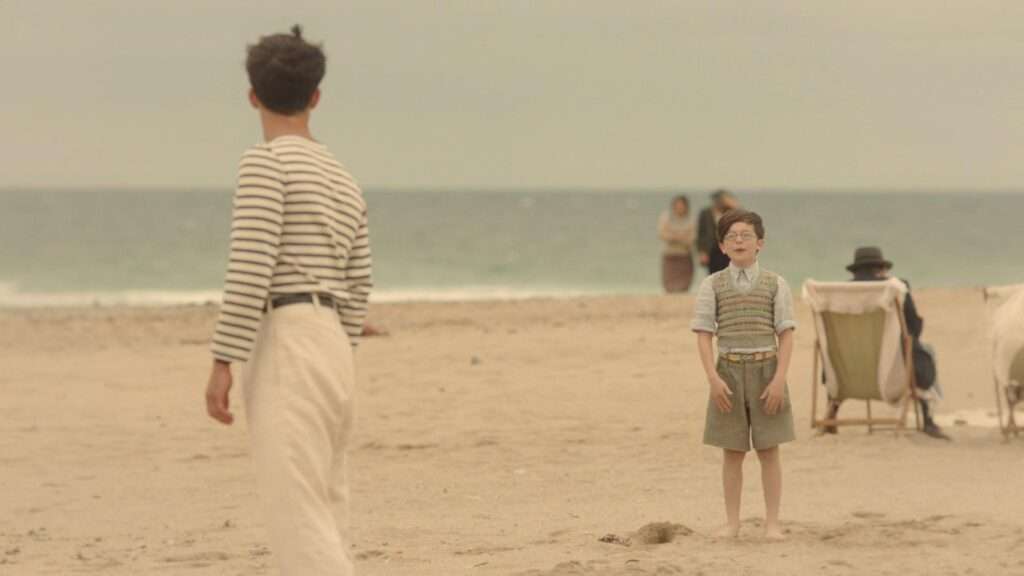
12. Vera’s Character
Vera is arguably the major character in both adaptations despite the presence of supporting cast members. The literature and the play both have this, although the show emphasizes it more.
Vera outlives the others in the narrative, so we get to know her and her thoughts more deeply, allowing us to grasp why she chooses suicide by hanging. The show goes farther by having Vera play the role of suspect and almost detective.
She has a higher IQ than most of her peers. She is the one who discovers the broken figurines first in the TV adaptation (Rogers does in the book). She provides the group with a psychoanalytical breakdown of the killer by explaining how each victim is slain (Blore does this in the book).
Up until the very end, Vera appears to be the most naive of the characters. Vera’s memories seem staged to support her side of the story: she tried to reach Cyril but was too slow, and now she is haunted by him. The others’ misdeeds are revealed in full detail in a single flashback.
We’ve been on Vera’s side for so long that it comes as a shock to see the truth. The book prevents the reader from becoming too attached to Vera. She hasn’t gotten over her feelings for Hugo, but she clearly despises Cyril. She blames herself for Hugo’s death and goes insane in anticipation of her own murder the longer she stays on the island.
Series Vera breaks from remorse rather than terror. Strangely, it’s not uncommon for adjustments to soften Vera. Only watched the BBC version, but from what I hear, many other adaptations exonerate her. Many film adaptations, I’ve been told, alter the story so that she remains innocent and lives. In-game, that is indeed the case.
Honestly, I enjoy Vera in either form. Since Book Vera is heartless and ruthless from the get-go, I find her to be the worst of the two, but by the end of the TV series, Series Vera has caught up to and perhaps even surpassed her. The sequence in which she bargains is very tense.
Each character is well-suited to their medium, but if I had to choose, Book Vera would be my pick. She’s more at home with the rest of the cast; she plays a significant role, but not one that guarantees her longevity.
Giving the audience a sympathetic character to root for can boost viewership and engagement, but doing so can also reduce the impact of a surprising plot twist. In the book, literally anyone may be the next target. The fact that the show’s key character, Vera, remains until the conclusion is not shocking.
13. Seton’s Death
Edward Seton, the defendant in both stories, was given the death penalty by Judge Wargrave. Seton’s innocence was widely assumed, but Wargrave had no doubts about his guilt.
Everything else is different. The novel ends with Seton having murdered an elderly woman.
He is a serial killer who meted out bizarre punishments in the show. Seton selected persons he believed to be sinners and served as judge, jury, and executioner for them, even though there was no external logic to his actions. Wargrave sensed a similar spirit in Seton and was inspired to follow in Seton’s footsteps when he went to see him hanged.
Wargrave finds inspiration in Series Seton, and by telling the others about him, the audience is introduced to Wargrave’s own Modus Operandi without giving anything away. This condenses Wargrave’s final monologue and provides him with a more concrete source of motivation than the vague “I’ve always been obsessed with murder and justice” that serves as his only epiphany in the original novel.
The novel’s version is acceptable, especially as Wargrave is given an entire chapter to defend his actions, but I like the TV show’s. Having Wargrave recognize himself in another killer, letting him understand what he genuinely wants in a moment of realization, is more dynamic than having him know from early childhood that he wanted to murder someone.
Moreover, it increases the importance of Seton. Everyone on the island is there as punishment for a murder they committed.
Seton is responsible for bringing Wargrave to the island. Narratively, I find that to be more satisfying.
14. Ending explained – Book v/s Series
In the novel’s concluding chapters, police investigators scour the island for clues but come up empty. They examine all of the available evidence, but come up empty. The victims’ own handwriting provides them with some of the information they need.
The police have a starting point with the written accounts left by Vera, Miss Brent, and Blore. However, these hints just serve to further confound matters, as the entire scenario appears implausible. There is no evidence of written accounts for the series, and no outside examination has been conducted.
When one of the main characters dies, the show is over and done with. Although it’s a little point, the novel is the one I enjoy reading the most. Cleverness abounds in a crime whose details remain hidden even after extensive reporting. Blore was a detective, but his findings haven’t helped clarify anything.
It’s so neat how this all fits together with Wargrave’s demise (which we’ll get to in a little). Because of how well the work is written, I was convinced for a little while that I would never figure out who had committed the crime. I already knew it was brilliant and twisted, but the part with the cops really upped the ante.
While the movie version was exhilarating, the TV series version is less so.
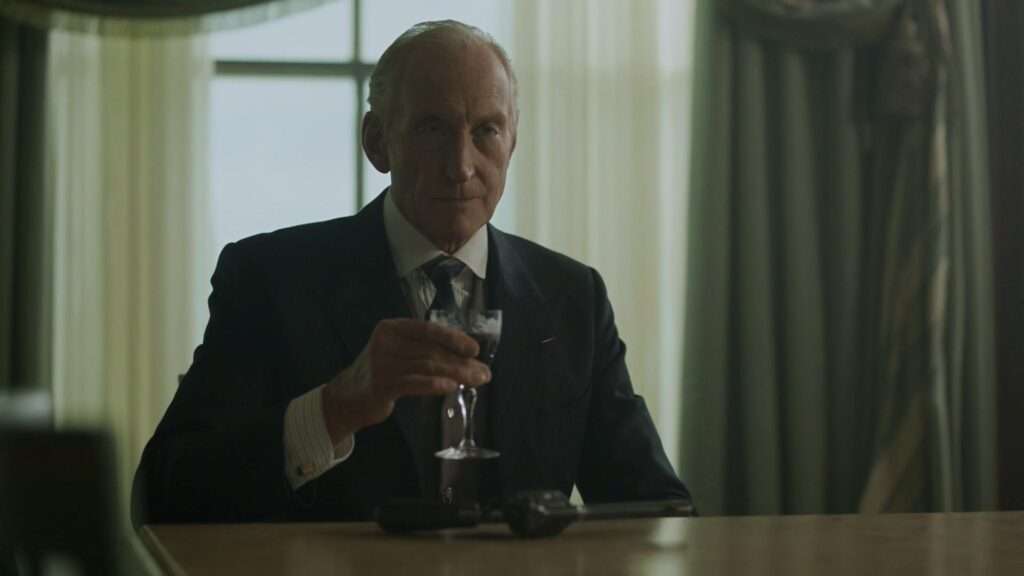
15. Confession and Death of Justice Wargrave
Vera kills Lombard and then commits suicide by hanging herself in her chamber. She passes away in the story without ever learning Owen’s true identity.
After she passes away, Wargrave removes the chair from under her and goes back to his own room, where he sets up the gun so that it will shoot him in the head and leave him laying in bed, just as Vera, Miss Brent, and Blore had described. With eleven dead on the island, it’s clear that none of them were the final victims.
The cops had to declare they have no leads as to who might have killed them. The only time the mystery is solved is when a fishing boat coaxes out a complete confession. Wargrave’s flair for dramatics and his desire to take credit for the inexplicable murder led him to leave the confession.
That last bit is pure brilliance. There are no dangling threads or other problems.
Despite the puzzle’s impossibility, everything seems to fit. I’m in utter awe of it. The series’ conclusion is predictable and lacks emotional impact. As Vera gasps for air, Wargrave enters the room and makes his confession.
I can see why they made the adjustment, even though I don’t particularly like it: having Wargrave make a personal appearance and monologue is more cinematic than having new players find a message in a bottle.
They were completely out of options. The way Wargrave ends his life is the main alteration I have issues with. He arranges a double-sided table and shoots himself in the mouth. The bullet flies across the table and settles near the opposite setting.
This sort of works. It serves a similar purpose.
Someone appears to have assassinated Wargrave. However, Wargrave’s death in the book was an option for the program. It’s far more convenient and cool to reenact the faked death. It’s frustrating, but I get why nobody on the program left behind written accounts like they did in the book.
16. Murders or Deaths?
As mentioned in our previous post, this novel has more number of deaths or murders than any other Christie’s book. Finally, we’ve arrived. This is the most noticeable shift from the novel to the TV show.
Both Wargrave and Owen’s versions of the story involve him killing people he believes deserve it because of the lives they’ve taken. In the book, he chose innocent bystanders whom the authorities could not prosecute. They are murderers, but they can’t be tried for it because their victims weren’t truly killed. Wargrave is a just man.
He has a pathological need to see justice done, thus he kills murderers who have not and otherwise would not face consequences for their actions. Marston’s license was suspended for only a short time after he drove over two kids because the crime was classified as reckless driving rather than murder.
Negligence, not murder, occurred when the Rogerses refused to provide a woman in their care her prescribed medication. Macarthur sent the man who was having an affair with his wife on a risky military expedition, and he never came back. Miss Brent kicked out her friend, who later took her own life.
Armstrong may have been intoxicated during his operation, but tragic deaths occur routinely in the operating room. The victim died in prison, although Blore was not responsible for his death. Lombard did not kill anyone; instead, he simply starved them to death and abandoned them.
Rather, Vera failed to save Cyril but did not kill him.
Wargrave collects these fugitives in an effort to right this wrongdoing on their part. This reasoning, chilling as it may be, makes sense. It’s horrible, yet in some sick way it makes sense. We know, however, that the series alters some of the deaths.
Why weren’t Rogers, Macarthur, Lombard, Blore, and Lombard already apprehended by the law? Rather, they were responsible for more than one fatality. They clearly, coldly, and deliberately killed their victims. In a police station, Blore committed the act. Why did these criminals go free for so long?
The order in which Book Wargrave murders his victims follows a logical progression. With the altered histories, the order doesn’t make a whole lot of sense (shouldn’t Macarthur have stuck around longer, for shooting a friend? Shouldn’t Rogers have been left for near last? Is Vera’s passive kill really the worst?).
Series Wargrave never says anything about leaving the worst offenders for last so they have to suffer the psychological trauma, which is probably for the best. The tale paints a vivid picture of the circumstances in which these criminals evaded capture. Wargrave’s twisted view of justice serves as a unifying theme throughout the book.
The show is great, but it’s missing that bigger picture structure.
There were some fantastic improvements I didn’t see until I reread the book, but there were also some modifications I wished hadn’t been done. It’s easy to see why this book is one of the best-selling mysteries of all time. It’s horrifying but impossible to put down.
Even though I’ve read it a dozen times, I still couldn’t put it down. It pulls you in and doesn’t let up for a second. Since it would take a lot of work to develop a bad version of And Then There Were None, it stands to reason that any adaptation of the novel will be successful. The BBC show did not address this issue.
The change is very well done. It stays true to the source material quite closely, with just minor adjustments made to optimize the material for television. And Then There Were None comes as close to adapting the novel as a television drama can without being a carbon copy.
I really recommend it since it takes some subjects to a deeper level and develops some characters further. I had a great time reading the book and then immediately seeing the show, so I highly recommend doing the same.
Disclaimer: This blog post may contain affiliate links. If you click on these links and make a purchase, The Crimson Books may earn a small commission at no additional cost to you.
About the Author

Benjamin Hughes is a literary enthusiast with a lifelong passion for books. He has an extensive knowledge of classic literature and a profound interest in exploring the depths of philosophical and existential themes.
With his articulate writing style, he guides readers through complex narratives and leaves them with a deeper understanding and appreciation for the written word.
